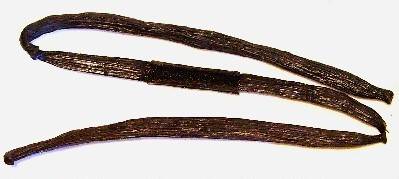Greek name and pronunciation:
vanilia, βανίλια, pronounced vah-NEEL-yah
At the market:
Vanilla extract is usually sold as a liquid derived from soaking vanilla beans in alcohol. In Greece, and in specialty stores and large markets, vanilla is sold as an alcohol-free powder in airtight vials. Vanilla beans (pods) are sometimes available.
Physical characteristics:
Vanilla seed pods (beans) are dark brown, slender, pleated and about 8 inches long. Pods are filled with thousands of tiny seeds. The aroma and taste of vanilla is traced to the chemical “vanillin” which is produced by induced fermentation of the chopped beans.
Usage:
In Greek cooking, vanilla is used in sweets, ice cream, preserves, sweet doughs, and elsewhere. The powdered form is especially good for making custards, and sprinkling into dishes and beverages.
Substitutes:
vanilla powder (use half as much)
Origin, History, and Mythology:
Pre-columbian Mayans and Aztecs used vanilla to flavor beverages, and both Europeans and Americans first used vanilla to flavor drinking chocolate. 17th century Europeans mixed vanilla beans with their tobacco for smoking and chewing.
Medicinally, in 17th century Europe vanilla was touted as a miracle drug, an aphrodisiac, and fever reducer. Today, vanilla is also used as a pharmaceutical flavoring.

